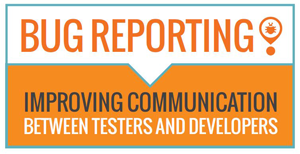For most businesses, quality assurance and quality control are both important factors in determining whether you’re consistently providing a good product or service for your customers. While there is some overlap between the two concepts, there are important distinctions that must be understood by any business if it wants their apps or websites to function properly.
Quality assurance is an effort by a company to maintain a stated goal of quality in a good or service by crafting a process that ensures that level of quality. Quality control is the system by which those standards are maintained, usually by testing the product or service against the level of quality desired. Quality control traces its roots back to the era of craftsmen in early 19th century America, while quality assurance has origins in World War II era manufacturing.
Here are some more examples of how these two concepts differ:
Process vs. Result
Quality assurance is a process that’s created before your team begins testing. Attention is given to every aspect of the testing procedures, ideally creating a process where the highest quality product is the result. Quality control looks to that result to ensure the process has succeeded in preventing defects and, if it hasn’t, to identify bugs that do exist.
Think of it this way: if you are developing a website, quality assurance will help to ensure that fewer bugs wind up in the finished product. Quality control will verify the quality of that product by checking for any bugs that quality assurance could not prevent.
A Proactive Plan vs. A Reactive Response
It’s perhaps easiest to think of the difference between quality assurance and quality control as creating a plan and ensuring that plan succeeds. Quality assurance is about being proactive – thinking far down the line about potential problems and creating a mechanism by which those issues never become a reality. Quality control is inherently reactive, responding to unexpected issues and ensuring the final product is what was intended by the quality assurance process.
Various Departments vs. A Small Team
Although the process of crafting a quality assurance plan will likely only involve a few key stakeholders or a third-party, various departments are informed of and trained on that process. It’s up to everyone to understand what the quality assurance standards are within their specific role. Meanwhile, a specific set of employees would oversee quality control.
For example, if you are developing an app, you may involve both your development and operations teams (especially if you are using a DevOps model) for your quality assurance testing process. With quality control, however, you would involve only a small team of testers.
The Key Similarity
While quality assurance and quality control have obvious differences, they share an important similarity: they are both absolutely necessary to the success of any product. Quality assurance without control means you’re likely not reacting to the failures of your process. Quality control without assurance means you’re probably having to identify and solve a lot more problems than necessary. Without a commitment to both concepts, your product could be in trouble.
As American businesses become increasingly digital, quality assurance remains just as important as ever. If you run a website or app that needs quality assurance testing, Beta Breakers has you covered. Our qualified team of testers will run a series of automated and manual tests to find bugs, improve the user experience, and aim to find any potential future defects. Call 415-878-2990 to learn more today.

 With Experience in Quality Assurance & Testing Desktop Software, Mobile Apps, Websites & Web Applications for Nearly 30 Years, Beta Breakers has become the Premier Software Quality Assurance Labs and Application-Testing Provider -
With Experience in Quality Assurance & Testing Desktop Software, Mobile Apps, Websites & Web Applications for Nearly 30 Years, Beta Breakers has become the Premier Software Quality Assurance Labs and Application-Testing Provider - 


Leave a Reply